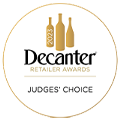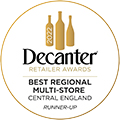Germany is home to the deeply wonderful Riesling grape with plenty of styles to explore. We tend to think of Germany producing sweeter styles, but the truth is that the vast majority is dry, not just from the warmer regions such as Baden and Pfalz, but also in the Mosel, Nahe and Rheingau.
The big bottling companies which used to churn out vast quantities of Liebfraumilch and Niersteiner Gutes Domtal are increasingly turning to bottling New World wines shipped in bulk to Europe while a new generation of young growers is driving dry German wine forward and winning important markets in the Far East, Scandinavia and the United States with very pure, crisp, mineral styles. And don’t forget the Grauburgunders (Pinot Gris), Weissburgunders (Pinot Blancs) and Spätburgunders (Pinot Noirs). Surprisingly, Germany is one of the world’s largest producers of Pinot Noir.
The Mosel is the classic area for elegant, balanced, off-dry Rieslings from its steep, slatey slopes. Appellation-wise it now includes the tributaries of the Saar and Ruwer. Try a floral Wehlener Kabinett for a great introduction to this style and then contrast it with a Kabinett from the deeper soils of Piesport Goldtröpfchen to appreciate the difference a few miles make. Brilliant wines - full of white pear fruit - are produced in the Saar Valley from lesser known vineyards in Wiltingen and Oberemmel. Back on the Middle Mosel, Braunebergers are full and slatey then go down the river through Bernkastel to the very fine wines of Graach. Finally the vertiginous slopes of Erden and Urzig – Prälat, Treppchen and Würzgarten – produce some tremendous wines, both dry and sweet.
Along the Rhine, the Rheingau is where the importance of late harvesting Riesling was first discovered. The story goes that the proclamation announcing the start of the harvest was delayed. For many years production was dominated by a small number of underperforming larger producers but things are now looking up again. Round, full-flavoured wines are made on (mostly) gentle slopes going down to the Rhine. The River Nahe actually rises in the Hunsrück hills and flows northwards, away from France, through rocky escarpments before flowing into the Rhine at Bingen.
White
Mosel Dry/Trocken
To our mind the Mosel is more suited to off-dry wines which give better balance, but many producers, such as Dr Loosen do make excellent dry wines, particularly from ‘grand cru’ sites which have the benefit of extra degrees of ripeness.
Mosel Off-Dry/Halbtrocken
Christoph Schaefer has taken over from his father Willi and continues to make wonderful wines in the tiny cellars under their house which are on allocation the world over.
Mosel Fruity/Fruchtig
Classically fruity Kabinett styles are becoming less popular in Germany, but a peachy Piesporter such as that produced by Gernot Hain, a slatey Wehlener from Martin Kerpen, a limey Saar or an elegant Ruwer wine still takes some beating.
Mosel Sweet/Edel
You will also find a full range of sweeter styles from Spätlese through Auslese right up to Eiswein and Trockenbeerenausle produced in tiny quantities by dedicated growers although warmer winters are making the production of Eiswein more difficult, even for such practised producers such as Weingut Max Ferd. Richter. Stefan Justen of Weingut Meulenhof uses the great vineyards of Erden to maximum effect with sublime late-picked Rieslings.
Rhineland Dry/Trocken
South of the Rheingau are the large areas of the Hessen and Pfalz where much of the bulk wine came from, but which is now increasingly given over to quality dry whites. The famous old firm of Bürklin-Wolf in the Pfalz makes a wonderful range of intense and complex dry wines using biodynamic methods. The area of Baden is the southernmost in Germany with its best area being the Kaiserstuhl, an extinct volcano rising from the valley floor opposite Colmar. There are more Pinot varieties than Riesling here and Konrad Salwey makes full-flavoured, dry wines from these.
Rhineland Off-Dry/Halbtrocken
Geographically the Nahe is in the middle between the Mosel and the Rheinhessen and its wines have elements of both. Dönnhoff is the leading grower with spicy and slatey wines from the complex terroirs around Schlossbockelheim, Kreuznach, Niederhausen and Oberhausen.
Rhineland Fruity/Fruchtig
The warmer climate of the Rheingau gives fuller and richer wines but still with wonderful balance as Franz Michel of Domdechant Werner demonstrates at Hochheim. Further west, at Oestrich, the Kühn family make intense and full wines using bio-dynamic methods.
Rhineland Sweet/Edel
Gloriously rich wines made in tiny quantities on rare occasions these days.
Red
There are more Pinot varieties than Riesling in Baden where Konrad Salwey makes full-flavoured, dry wines in the Kaiserstuhl, across the Rhine from Alsace. Growers in Germany look to Burgundy for their inspiration for red wines and the quality in recent years has improved dramatically. Konrad Salwey makes a fine example.
































